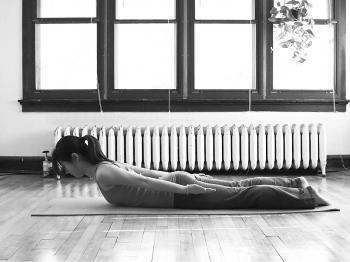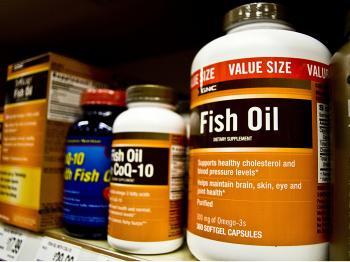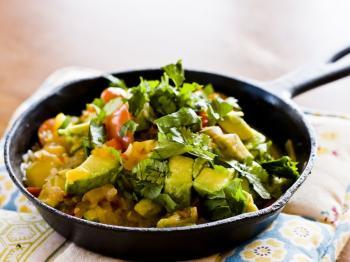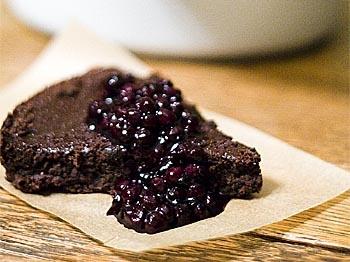Even when we buy milk with the best of intentions to drink three glasses a day to help reach our recommended levels of calcium and vitamins A and D, sometimes it just doesn’t get consumed. But there’s no need to cry over expired milk sitting in the back of the fridge. Instead of dumping the liquid, incorporate it into various baking projects.
If milk is properly stored at a food safe temperature of lower than 41F (5C), it should still be safe to drink even one week after the printed expiration date on the container. However, most people associate expired milk with spoiled milk and are reluctant to drink it, fearing that it might taste foul.
But this expired milk is still salvageable—it comes in handy for baking endeavors. By acidifying the expired milk with lemon juice or vinegar, we can turn it into soured milk for baking. This soured milk can be substituted for cultured milk products such as buttermilk or kefir in recipes.
Using soured milk as a baking ingredient provides a tangy punch to your product. It gives a rich flavor and creamy texture similar to heavy cream, but without those extra calories. In addition, soured milk ensures that your baked product will rise beautifully each time.
The reason—soured milk gives that fluffy texture desired in pancakes and muffins is that it plays a role in the leavening, or rising, process during baking. Usually baking soda or powder is used as a main leavening agent. When baking soda is mixed with liquid it produces carbon dioxide, which causes the batter to rise when baking in the oven. Baking soda has a basic pH while soured milk is acidic. When the two are mixed together, it produces a maximum amount of carbon dioxide (This is the same principle used in the popular baking soda and vinegar volcano science project).
Lastly, for the sloppy baker, soured milk is like a mini insurance policy against a baking disaster. A common mistake in baking is mixing in too much baking soda or accidently using baking soda in place of baking powder. This extra baking soda usually results in rusty spots and a salty, alkaline, bitter taste (known as the washing soda taste). The soured milk provides the extra acid to help react with excess baking soda and minimize the unpleasantness.
How To Incorporate Into Cookies
Below is a recipe I played with last week. I used a week expired milk found in my fridge. As expected, the cookies came out resembling light and fluffy cake cookies. As with many of my cookie recipes, I incorporated oatmeal and chopped almonds for the beneficial effects of fiber and protein.
Note: If the expired milk smells bitter or seems to have changed in texture (prior to acidification), there may have been excessive bacterial fermentation and the milk is past expired. In that case, food safety becomes a concern—don’t risk your health; toss out that milk.
Prep time: 20 minutes
Cook time: 8 to 12 minutes
Servings: 30
Dry Ingredients:
• 2 cups all purpose flour
• 1 cup old fashioned oats
• 1 ¼ cup granulated sugar
• ½ teaspoon baking soda
• ½ teaspoon ground nutmeg
• ½ cup golden raisins (optional)
• ½ cup chopped almonds (optional)
• A pinch of salt
Wet Ingredients:
• ¾ cup butter
• ½ cup soured milk (Add ½ tablespoon vinegar or lemon juice to ½ cup of milk, let it stand for 5 to 10 minutes)
• 2 eggs
• 1 teaspoon vanilla extract
Directions
1. Preheat the oven to 375F and line cookie sheets with parchment paper
2. Combine all dry ingredients will in a large bowl
3. Cut butter into the dry mixture and knead well until an even crumbling texture is achieved (similar to making biscuits or scones)
4. Stir together eggs, soured milk, and vanilla extract
5. Combine dry and wet ingredients. Add extra flour as needed to make a soft dough
6. Roll dough into 1 inch diameter balls and place 1 inch apart on cookie sheet
7. Bake for 8 to 12 minute until the bottom is golden
If milk is properly stored at a food safe temperature of lower than 41F (5C), it should still be safe to drink even one week after the printed expiration date on the container. However, most people associate expired milk with spoiled milk and are reluctant to drink it, fearing that it might taste foul.
But this expired milk is still salvageable—it comes in handy for baking endeavors. By acidifying the expired milk with lemon juice or vinegar, we can turn it into soured milk for baking. This soured milk can be substituted for cultured milk products such as buttermilk or kefir in recipes.
Using soured milk as a baking ingredient provides a tangy punch to your product. It gives a rich flavor and creamy texture similar to heavy cream, but without those extra calories. In addition, soured milk ensures that your baked product will rise beautifully each time.
The Science Behind the Magic
The reason—soured milk gives that fluffy texture desired in pancakes and muffins is that it plays a role in the leavening, or rising, process during baking. Usually baking soda or powder is used as a main leavening agent. When baking soda is mixed with liquid it produces carbon dioxide, which causes the batter to rise when baking in the oven. Baking soda has a basic pH while soured milk is acidic. When the two are mixed together, it produces a maximum amount of carbon dioxide (This is the same principle used in the popular baking soda and vinegar volcano science project).
Lastly, for the sloppy baker, soured milk is like a mini insurance policy against a baking disaster. A common mistake in baking is mixing in too much baking soda or accidently using baking soda in place of baking powder. This extra baking soda usually results in rusty spots and a salty, alkaline, bitter taste (known as the washing soda taste). The soured milk provides the extra acid to help react with excess baking soda and minimize the unpleasantness.
How To Incorporate Into Cookies
Below is a recipe I played with last week. I used a week expired milk found in my fridge. As expected, the cookies came out resembling light and fluffy cake cookies. As with many of my cookie recipes, I incorporated oatmeal and chopped almonds for the beneficial effects of fiber and protein.
Note: If the expired milk smells bitter or seems to have changed in texture (prior to acidification), there may have been excessive bacterial fermentation and the milk is past expired. In that case, food safety becomes a concern—don’t risk your health; toss out that milk.
Oatmeal Soured Milk Cake Cookies
Prep time: 20 minutes
Cook time: 8 to 12 minutes
Servings: 30
Dry Ingredients:
• 2 cups all purpose flour
• 1 cup old fashioned oats
• 1 ¼ cup granulated sugar
• ½ teaspoon baking soda
• ½ teaspoon ground nutmeg
• ½ cup golden raisins (optional)
• ½ cup chopped almonds (optional)
• A pinch of salt
Wet Ingredients:
• ¾ cup butter
• ½ cup soured milk (Add ½ tablespoon vinegar or lemon juice to ½ cup of milk, let it stand for 5 to 10 minutes)
• 2 eggs
• 1 teaspoon vanilla extract
Directions
1. Preheat the oven to 375F and line cookie sheets with parchment paper
2. Combine all dry ingredients will in a large bowl
3. Cut butter into the dry mixture and knead well until an even crumbling texture is achieved (similar to making biscuits or scones)
4. Stir together eggs, soured milk, and vanilla extract
5. Combine dry and wet ingredients. Add extra flour as needed to make a soft dough
6. Roll dough into 1 inch diameter balls and place 1 inch apart on cookie sheet
7. Bake for 8 to 12 minute until the bottom is golden




